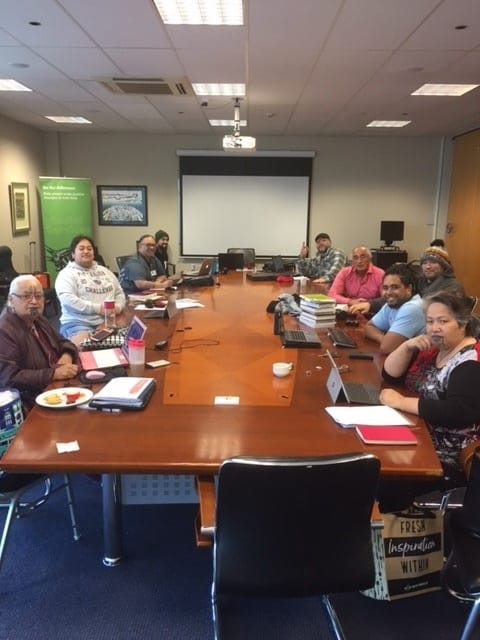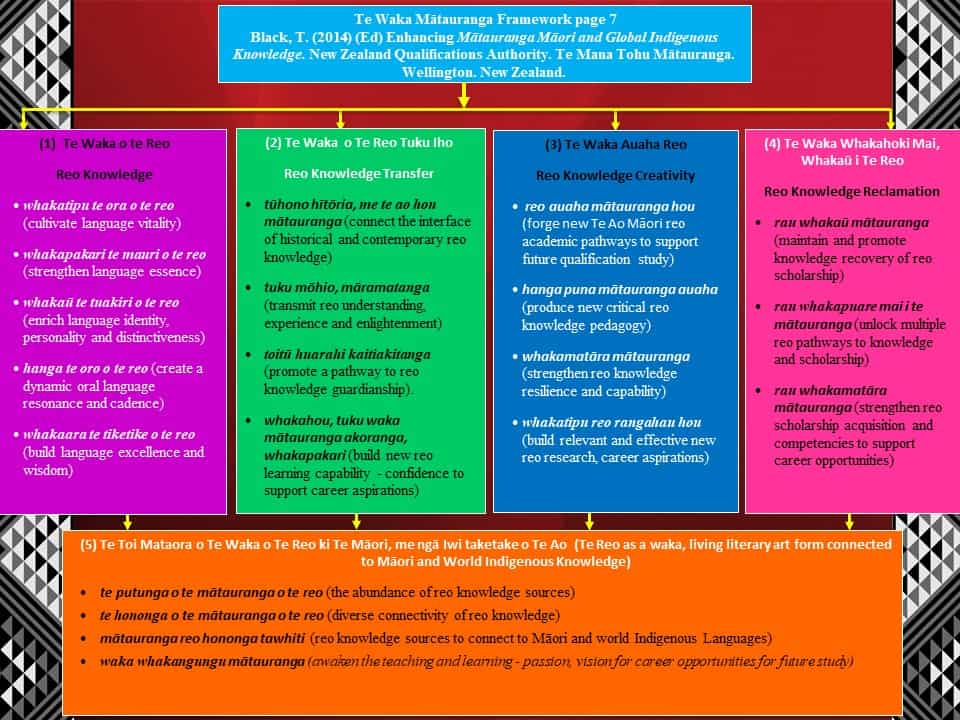The role of te reo knowledge and scholarship in the compilation of traditional and contemporary mōteatea
27/08/2018
Nā Taiarahia Black
Te tātari, te rangahau i te here kaha o te reo me ōna mātauranga tiketike ki roto i ngā kohikohinga kōrero tahito, o ēnei rā hoki hai āwhina i te whānau, hapū, iwi kia tūhono me o rātau ake mātauranga mo te ngaro o te whenua, tae atu ki ngā au tuki, au here, au tanuku o aua whenua ki roto i ngā āhuatanga o te taiao whakaritenga.
I roto i ngā tau mutunga kore nei 100 -160, āua atu aua tau tūkino e kūtia ana, e pēhia ana te ora, te whakakapari o te reo ki roto tahi i te iwi Māori me te Pākehā. Ā, ngaro kau atu te reo mai i tēnā whakatipuranga, i tēnā whakatipuranga. Whakaheke tēnei āhuatanga o te ngaro o te reo ki ngā whānau, hapū me ngā iwi. Ka ngaro rā te reo, ka ngaro ngā tikanga, ngā uarā me ngā here o ngā huhua mātauranga hohonu, mātauranga pupuri i ngā korero o te iwi, me te whenua. Huhua mātauranga whakawhitiwhiti, tātari i te ora o te reo piripono ki ngā korero tuku iho mo takoto o te whenua mo ngā au heke, au tuki, au tanuku o te ākina mai o te whenua.
He aha i pēnei ai te ngaro o te reo (1) i murua, i raupatutia ngā whenua ka whiua te iwi nō rātau ake aua whenua ki rāhaki, (2) ka whakakorea, whakangarotia atu te reo me ōna mātauranga hohonu katoa, (3) waihoki ka whakaeke mai ko ngā whakatanuku, waipuke nunui, papahoro ana ngā pari tahataha i roto i ngā tau tuangahuru nei.

Hei aha tonu, i roto i ngā tekau tau hoki atu 30-40 tekau tau ka tipu kaha mai te Kōhanga Reo, Kura Kaupapa Māori, Whare Kura, Kaupapa Māori, Mātauranga Māori, Pāpāho Māori; huri whānui noa e hikoi whakamua ana ngā taumata Māori o ngā aria matua whakapakari te reo whakaritenga; mātauranga, hauora, taha ohaoha, whakatipu, whakapakari, whakaora whenua, ngā mahi hangarau hou, mana motuhake, mahi rangahau pūtaiao hono tonu atu ki ngā ākina tūkino papa tipu whenua o te taiao.
Ngā runga i tēnei huarahi hou, huarahi pakari ka tāea te rangahau i ngā kohinga korero o ngā hekenga tuku korero tūhono ki ngā iwi ma te mōteatea e whakatipu, e whakapakari ngā korero tūhono ki a Tūhoe, Ngāti Awa, Te Whakatōhea, Te Whānau-a-Apanui, Rongowhakaata, Te Aitanga-a-Māhaki, Ngāi Tā Manuhiri. Nui atu ngā korero kai roto i ngā mōteatea hai whakatipu, whakahoki mai i ngā rārangi aria matua mātauranga hohonu kia tipu kaha ai te whakawhiti, tatari hai tūhono atu ki te taiao, ki te pūtaiao me ōna here tikanga rangahau hāngai ki te ao Māori. Mai i te tau 2016 kua oti i tēnei wāhanga o te reo rangahau Kia Manawaroa, Ngā Ākina Te Au Tūroa tūhono ki te mātauranga Māori te whakapukapuka i ētahi rauemi o te reo hai ātamira nui i te reo ki tōna taumata tiketike. Kua whakaputatia aua tuhituhi pukapuka nei ki ngā marae – wānanga- whānau, hapū me te iwi me ngā tauira reo ki Te Whare Wānanga o Awanuiārangi.
E whā ngā taumata o ēnei kohinga, tuhituhi pukapuka (1) te whakakao mai i ngā korero tahito o te mōteatea me ngā korero o nāianei e mau ai te mātauranga hai tuku ki ngā whānau, hapū me te iwi, (2) te whakatipu he mātauranga hou ki roto i ēnei mahi rangahau mōteatea, (3) te whakahoki mai, ki te whakapuaki i ētahi mātauranga hou kei roto i te mōteatea hāngai tonu ki ngā au tuki, au ngaro, au tanuku o te whenua. Koia tēnei mahi a te reo rangahau a Kia Manawaroa, Ngā Ākina Te Au Tūroa he tūhono ki te mātauranga Māori e mau ai te ora, te mauri, te tuakiri, te tiketike kia manawa roa ēnei here katoa ki ngā whakatipuranga haere nei ngā tau.
Ko te whakaara mai o ngā pātai e toru, uiui rangahau o runga ake nei o Kia Manawaroa, Ngā Ākina Te Au Tūroa tūhono ki te mātauranga Māori te taumata kei te tino whāia i nāianei ki roto i tēnei mahi rangahau, whakarite rauemi reo hai whakahoki mai te mauri ora o te reo ki te whānau, hapū, iwi me ngā mātauranga tūhono ki te whenua, au tuki, au ngaro, au tanauku o te taiao me here ki te ao pūtaiao hohonu whakawhiti kōrero.
The role of te reo knowledge and scholarship in the compilation of traditional and contemporary mōteatea – narratives to support whānau, hapū and iwi engagement with their knowledge and scholarship, their whenua and the loss of whenua in natural hazard management.
In the last 100-160 years the diversity loss of te reo for Māori and Pākehā in Aotearoa New Zealand has affected intergenerational whānau, hapū and iwi reo experience, knowledge and scholarship. This has been caused by (1) historical removal from inherited land sources and depopulation, (2) deliberate suppression of languages and knowledge, (3) the occurrence of environmental hazards over the millennium.
In the last 3-4 decades Kōhanga Reo, Kura Kaupapa Māori, Whare Kura, Kaupapa Māori, Mātauranga Māori, tertiary institution universities and Wānanga ā-iwi, Māori multi-media and broadcasting have had coverage right across the broad spectrum of Māori world views; in te reo, education, health, economics, land development, and sovereignty issues. This has allowed opportunities created by technology, sciences, and environmental hazard issues to emerge exponentially.
This new direction has allowed whānau, hapū and iwi in Tūhoe, Ngāti Awa, Te Whakatōhea, Te Whānau-a-Apanui, Rongowhakaata, Te Aitanga-a-Māhaki, Ngāi Tā Manuhiri to engage with the research through traditional songs and other rich narratives sources. These forms of engagement have re-established the loss of responsive te reo critical theories, through critical pedagogical research methodologies. As a product of this, the Resilience to Nature’s Challenges research platform has published eight te reo source tool kits, which support effective engagement with whānau, hapū and iwi.
These emerging critical te reo publications support whānau, hapū and iwi engagement in 3 key areas: (1) accumulation and sharing of traditional and contemporary knowledge, (2) the creation of new knowledge, (3) restoring and unlocking new knowledge sources.
This Resilience Challenge te reo – research platform, titled ‘Investigating the role of te reo knowledge and scholarship in the compilation of traditional and contemporary narratives to support whānau, hapū and iwi engagement with their knowledge whenua and the loss of whenua in natural hazard management’, is based on 4 research aims:
- the compilation, retelling and refreshing of essential narrative-heritage sources connected to the people and the natural environment,
- the recovery of rich te reo literary expression and philosophy
- recapturing reo historical ‘truths’
- compiling reo knowledge that is connected to occurrence of environmental hazards over the millennium to advance the expression of Māori philosophy and knowledge in science and environmental hazards.
The research aims above point the Resilience Challenge te reo – research platform to a new te reo direction. New knowledge narratives, supported by the Mātauranga Framework presented below, will be integrated with digital publishing to engage with Māori language teachers – marae, whānau, hapū, and iwi across Aotearoa. It will also create te reo resilience teaching resources to give continuity and build-cultural te reo diversity around environmental hazards.




